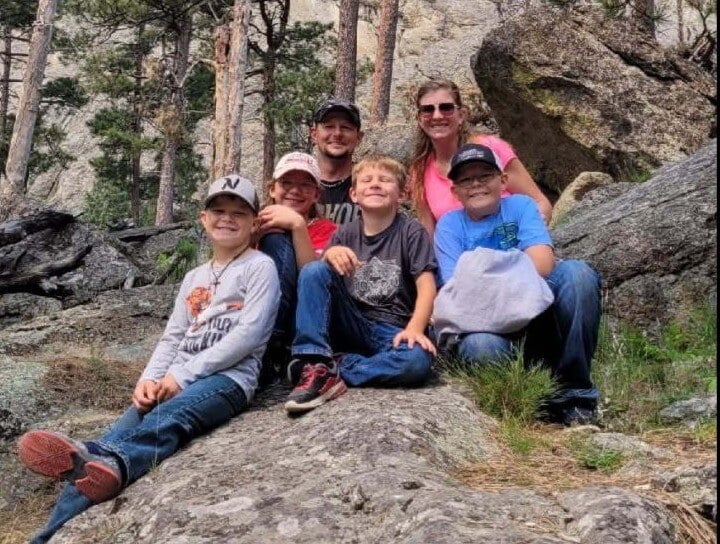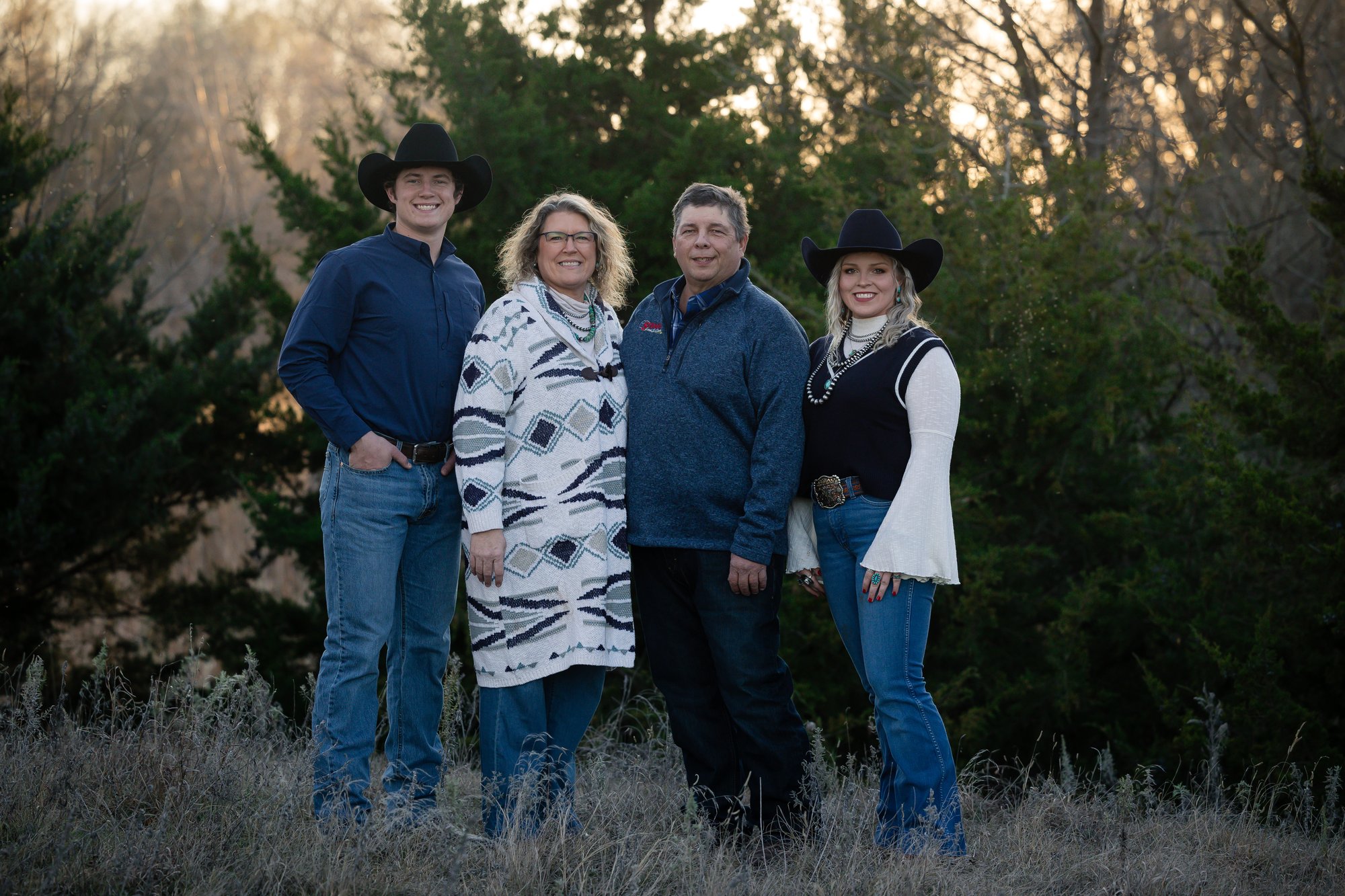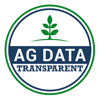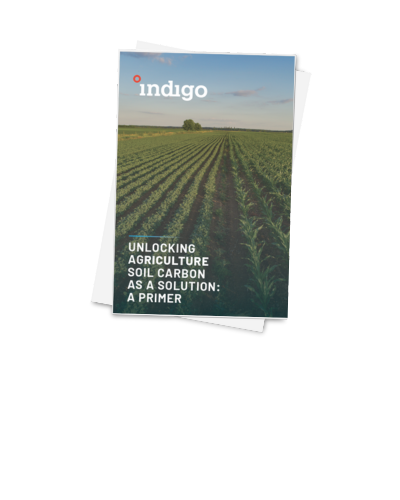Carbon By Indigo
Carbon by Indigo Program Highlights
Carbon by Indigo produces the highest-quality ag soil carbon credits, providing farmers with opportunities to better their bottom lines and corporations with the opportunity to reduce risk by driving forward carbon removals, reductions, and water benefits. Our standard program returns 75% of the carbon credit purchase price to the farmer.
High farmer returns
75% of the weighted price paid by buyers for a carbon credit crop gets back to the farmer in the standard program. Rising carbon prices boost returns, while improved soil health over time enhances farm resilience.
Outcome-Based Program
We pay for carbon sequestered from the practices farmers adopt, rather than a lump sum or single payment for practice change, ensuring aligned incentives between farmers and corporations.
Integrity At Scale
Nearly 1M credits issued to date, making us the largest registry-approved ag soil carbon program in the market.
Registry-Approved Program
The Climate Action Reserve (CAR), an independent third-party registry, approves our credits and confirms their eligibility for sale.

Matthew Rebenitsch, North Dakota
"When I first signed up in 2020, it was too complicated. I wanted to participate, but it took too much time, and I didn’t know what I’d earn. This year, it took 90 minutes to enter my farm information from 2020-2024 plus four years of historic look back, and I got a real estimate based on years of data. Why wouldn’t farmers do this?"

Julia Strnad, Kansas
"I've been in the carbon program for four seasons, and with the earnings I expect this year, we're able to invest in expanding our land. Carbon gives us the confidence and financial flexibility to grow for the future. And with our future land expansion we plan to enroll more acres with our favorite, beloved, dear Indigo.”
Watch The Video
Our Programs Adhere to High-Integrity Standards



Get Started on Your Path to Prosperity
Unlock sustainable growth through Carbon by Indigo. Choose your path below.
FOR FARMERS
Grow your profits and enrich your soil
Looking for new ways to meet and exceed your bottom line? Enhance your soil and tap into a new market with carbon farming. Available across the continental US for 18 crops. Use our carbon calculator to estimate earnings and secure extra income by enrolling in Carbon by Indigo.
Are you a farmer in India? Enroll with our Joint Venture, Grow Indigo
FOR CREDIT PURCHASERS
Invest in the future
Interested in purchasing high-quality carbon credits? Leading corporations trust Indigo's credits and support farmers in their journey toward sustainable agriculture. Whether you're an individual, small business, or large enterprise, our credits empower you to meet your environmental goals while making a meaningful impact with a program you can trust.
FOR WATER-INTENSIVE CORPORATIONS
Drive measurable water conservation
Is your company looking to manage freshwater use for data centers and other water-intensive operations? Indigo collaborates with companies to implement regenerative agriculture programs that can reduce surface runoff, enhance soil moisture storage, replenish groundwater, and reduce erosion. By investing in these solutions, companies can drive measurable water conservation impact and manage water scarcity risk, while supporting surrounding communities.
Explore Carbon by Indigo
Our software allows farmers to input their field boundaries and crop data effortlessly, providing a real estimate of earnings and a clear overview of upcoming payment schedules.
“As the market for carbon credits expands, the farmer's going to be able to see that with the increased revenue because we're getting paid for the carbon we are sequestering. So as that becomes more valuable, that's more money in the farmer's pocket.”
Chris Lehe
Lehe Farms, Indiana“Farmers always want to do the right thing and they want to continue on so that operation can go generation to generation. It all starts with agronomy and it has to be right for the operation and the field and that farm. We're not looking for flash in the pan one year commitments. We really want to make sure it's sustainable long term and it's good for that operation.”
Casey Onstot
Marketing Leader , Corteva Agriscience“BCG is excited to partner with Indigo Ag as they develop promising technologies. The world needs viable, scalable, and high-quality carbon sequestration projects to address the climate crisis.”
Rich Lesser
CEO , BCG“We want to make sure we are here for many more generations. We do this by striving to always take care of the land.”
Kasey Bryant Bamberger
Ohio Farmer“For the first time, we can choose which program will make us the most money for our sustainability efforts, while working with our local buyer. I need flexibility for my operations year-to-year depending on a variety of factors. I’ve experienced a lot of success with the Carbon by Indigo program and having the option to sell my crop into a sustainable crop program without leaving the Carbon program or double counting is incredibly exciting and promising for us.”
Ryan Brady
Kansas Farmer“We are pleased to offer Indigo carbon offsets on the Cool Effect platform. We value Indigo's pioneering work with the Climate Action Reserve and Verra to quantify carbon sequestration in soil as well as its goals to teach and promote beneficial, sustainable agricultural practices that help both the farmer and mother earth.”
Dee Lawrence
Co-Founder , Cool EffectSubscribe to Indigo’s Sustainability Digest
A newsletter featuring the latest in regenerative agriculture and carbon markets.
Keep Up on the News
Including our latest carbon credit purchases, partnership announcements, and farmer news.

Explore the Latest from Carbon Market Experts
Learn about the untapped potential of soil carbon as a scalable climate solution.













